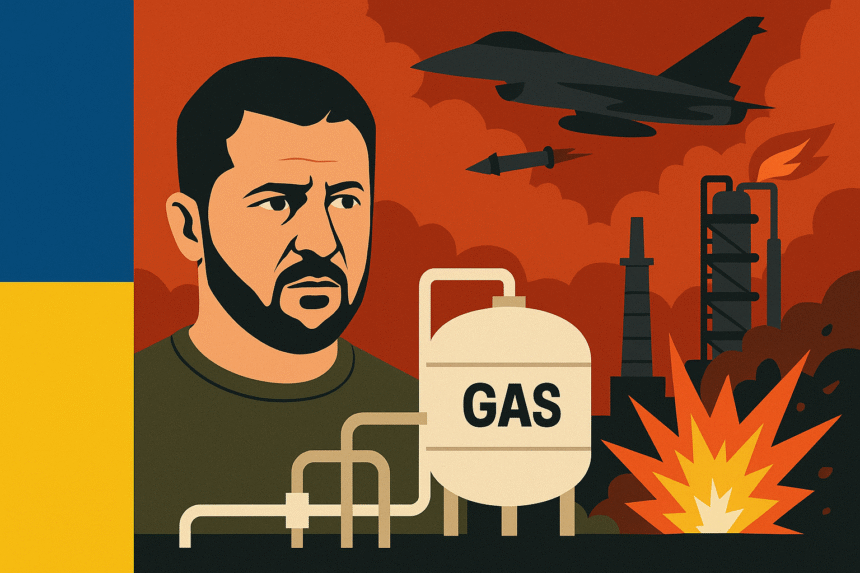Ukraine is facing a severe energy challenge following a Russian airstrike on a vital gas facility in the Odessa region, which serves as a key point for importing natural gas from the United States and Azerbaijan. The attack has caused significant damage to Ukraine’s gas infrastructure, intensifying concerns about national energy security with winter fast approaching.
President Volodymyr Zelensky condemned the strike as a “cynical and deliberate attempt” to destabilize Ukraine. “This is more than just an attack on infrastructure. It is a calculated move to weaken our country’s resilience during a critical season,” Zelensky said in a national address. He accused Moscow of using energy as a tool of hybrid warfare to pressure both Ukraine and its Western allies.
Gas Reserves at Historic Lows
According to the independent energy research group ExPro, Ukraine’s current gas storage levels have dropped to 32.3%, the lowest in over a decade. The Odessa hub was a major conduit for gas imports, and its loss significantly hampers Ukraine’s ability to replenish supplies in time for winter.
To meet seasonal heating demands, Ukraine now needs to import at least 4.6 billion cubic meters of gas. Officials warn that failing to close this supply gap could result in energy shortages affecting homes, hospitals, and public services.
“This facility was essential for receiving gas from Western allies,” said Ihor Lomachenko, energy analyst at the National Energy Security Institute. “Its temporary loss increases market pressure and may force Ukraine into high-cost emergency procurement.”
Odessa Facility: A Strategic Vulnerability
The Odessa gas hub has become a critical part of Ukraine’s energy supply chain since the country cut off direct gas imports from Russia after the 2022 invasion. The hub handled both LNG shipments from the U.S. and pipeline deliveries from Azerbaijan. Its strategic role made it a likely target, and analysts say the strike indicates a Russian shift toward weakening Ukraine through indirect but essential targets.
Energy experts believe the move reflects an evolving Russian strategy to undermine Ukraine’s home front as military operations become more constrained on the battlefield.
Western Response and NATO Assistance
The attack has prompted strong reactions from European and NATO leaders. A $500 million NATO-backed initiative, funded by Sweden, Denmark, and Norway, is expected to boost Ukraine’s air defense capabilities, including the deployment of U.S.-made Patriot systems and advanced radar systems focused on protecting infrastructure.
President Zelensky has called for the acceleration of military and technical support, particularly defense systems designed to protect key logistical and energy assets. “We must not allow energy blackmail to define the winter for millions of Ukrainians,” he warned.
Preparing for Winter Under Pressure
Energy Minister Herman Halushchenko announced that the government is holding emergency talks with EU partners and regional allies to explore rerouting gas deliveries and securing temporary gas storage abroad. However, global LNG demand, price volatility, and transport challenges complicate these efforts.
Ukraine’s energy strategy is now in a race against time, as it attempts to restore functionality, negotiate new imports, and shield its population from what could be a harsh winter.
The situation underscores how energy infrastructure has become a frontline target in the broader conflict between Russia and Ukraine. With winter looming, Ukraine’s focus is now on securing international support and rapidly rebuilding its damaged supply routes before the cold sets in.








